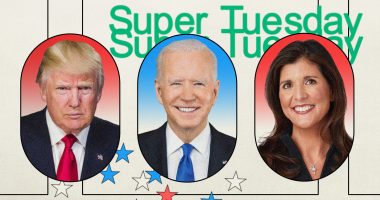When a young music journalist moved to New York in 2006 looking for work, she didn’t quite grasp the power of her résumé.
Noticing that her most recent job was as music editor for the Minneapolis alternative weekly City Pages, the editor interviewing Lindsey Thomas for a position at MTV News playfully dropped a phrase she’d never heard: “So you’re part of the Minnesota music critic mafia, huh?”
She got the gig.
Since the days when Prince vaulted to stardom and the Replacements and Hüsker Dü established the gold standard for raw indie-rock, Minneapolis has always punched above its weight, musically. And City Pages, the free weekly that documented those artists, developed an outsized reputation all its own.
While it outlasted many of its kin, including the Village Voice, City Pages was shut down suddenly last Wednesday by its current owner, the Minneapolis daily newspaper the Star Tribune, which said challenges brought by the pandemic made the paper “economically unviable.”
Throughout its four-decade run, a disproportionate number of City Pages alumni went on to work at national musical magazines, to publish definitive books of music history and criticism, and to foster a tone that was envied and emulated throughout the industry. Even City Pages’ readership proved influential.
“It was absolutely essential as a local road map to arts culture,” said Ryan Schreiber, the founder of the music website Pitchfork, who grew up in the Twin Cities suburbs. “City Pages led me to weird places where I made weird friends, and it taught us about all the weird art that brought us together. Its 2006 cover story on Pitchfork is the only press that’s ever meant enough to me to have framed.”
Before the web made every publication instantaneously available to every reader, a newspaper assumed its audience was primarily local. But media on the coasts kept tabs on City Pages — especially its music section. The rock criticism pioneer Greil Marcus, who published his “Real Life Top 10” column in City Pages from 2003 to 2004, once called it “the best alternative weekly in America.” Talented writers from out of town sought to contribute (a young Ta-Nehisi Coates unenthusiastically reviewed Ghostface Killah’s “Supreme Clientele” in 2000) and even moved across the country to work there. (I relocated to Minneapolis in the late ’90s and was the music editor from 2000 to 2001 and again from 2017 until they shut off the lights.)
“Reading City Pages was the first time I realized music criticism didn’t have to be about, ‘Is this album good or bad?’” said the writer Melissa Maerz, who worked there in the early ’00s and later was a staffer at Spin and Rolling Stone. “The writing could be kind of experimental, almost novelistic, and it could be funny or high-concept.”

The City Pages story began in 1979, a decade after the births of the music magazines Rolling Stone and Creem, when the publisher Tom Bartel started a music paper called Sweet Potato that was written almost exclusively (and often pseudonymously) by the editor Martin Keller. Rechristened as City Pages, the publication added arts and news coverage, but its main draw remained its music reporting and criticism, including some of the earliest published stories on the Replacements and Hüsker Dü — and, of course, Prince, who Keller once offhandedly referred to as “Your Royal Badness” in a column, an epithet he was shocked to hear the VJ Mark Goodman use on MTV a short while later.
City Pages’ local connections gave it an unexpected leg up on its competitors. After Keller wrote a piece about the childhood Bob Dylan friend Larry Kegan in 1983, the grateful Minnesota-born rock legend reportedly asked Kegan, “What’s a nice thing we could do for Marty?” The answer: a long interview.
A music critic, Steve Perry, took over as editor in chief in the late ’80s. “All I ever wanted to do was surround myself with smart, interesting people,” he said. To handle music and arts coverage, Perry brought in Jim Walsh and Terri Sutton, two writers whose styles focused on their personal reactions to the music they heard, and he gave them free rein.
“We were let loose to follow whatever passion we wanted to follow,” Sutton said, though Bartel had one request: “He asked if I could just swear less.” (She couldn’t.)
In the early ’90s, Sutton wrote the first positive stories on Babes in Toyland, at a time when the all-female trio were mostly mocked by the male-dominated local scene, and she also both documented and inspired the riot grrrl movement. “Reading Terri Sutton as teenage music fan and burgeoning feminist effectively gave me a path in life,” said Jessica Hopper, a writer and book series editor who contributed to the paper over the years. “Because City Pages had a feminist critic, I assumed, mistakenly and blessedly, in those pre-internet days, that every town had a feminist rock critic at their paper.”
Will Hermes, a transplanted New Yorker who helped consolidate City Pages’ reputation as a home of great music writing when he became arts editor in 1993, said, “Minneapolis was such a hot music town that you could have almost justified focusing on what was happening locally, but they were ambitious.” (As Perry put it, “We thought of music criticism as a community having a bunch of conversations, and even though we were the No. 2 paper in a No. 15 market, we wanted to be part of that conversation.”)
In the ’90s the paper paid attention to alt-country bands like the local group the Jayhawks and the frequent Minnesota visitors Wilco before the larger media caught on, and also charted the rise of the independent rap label Rhymesayers, which would have a national impact.
The Village Voice was the model for Hermes, now a Rolling Stone and NPR contributor. “But the Voice could veer into critics writing for each other,” he said. “You couldn’t really get away with that, you had to communicate with a broader readership. My ideal was write something that is supersmart but try to hook somebody who might not even be interested in reading about music.”
Hermes pointed to a cover feature dedicated to Kurt Cobain after the Nirvana leader’s death that collected thoughts and remembrances from Twin Cities musicians who knew Cobain, but also from local fans. “It was basically Facebook before Facebook,” he said.
Under Hermes, City Pages established a culture of rigorous editing that continued after he left. “The editors had standards,” said Jon Dolan, a City Pages music editor in the late ’90s who now works at Rolling Stone. “There was no wannabe Lester Bangs going off on crazy rants.” Michaelangelo Matos, a regular contributor whose work included vital documentation of the Midwestern electronic music scene, said, “You couldn’t get an unnecessary sentence in that paper.”
There was also always the sense that Minneapolis’s most famous artist was looking over your shoulder. Maybe it was just a legend that Prince read everything written about him in town. But you never knew when he might respond to criticism — as Maerz found out when, shortly after becoming music editor in 2001, she criticized some of his retrograde statements on gender roles. The 22-year-old Maerz was summoned to Paisley Park for an off-the-record one-on-one with the incensed star. “We had a pretty heated debate that ended with him storming out of the room,” Maerz said. “I was terrified, but also kind of thrilled.”
The music section tried to balance the demands of web publishing with the standards of its editing tradition in recent years. “Every week felt like such a fight to keep some kind of integrity to what we were doing,” said Andrea Swensson, who was music editor when the New Times chain acquired the paper in 2006 and instituted digital publishing quotas.
During the subsequent years, City Pages documented the rise of Bon Iver (from almost-local Eau Claire, Wis.) and helped introduce the world to the budding pop star Lizzo, the 2013 winner of Picked to Click, the best new music artist poll that Walsh started in 1991.
And until the end, City Pages strove to remain a music writer’s paper where, as Walsh put it, an enthusiastic amateur could walk in the door and say to an editor, “I’d like to write this, I’d like to use the first person and I’d like it to sound smart. Help me.”
Source: | This article originally belongs to Nytimes.com









